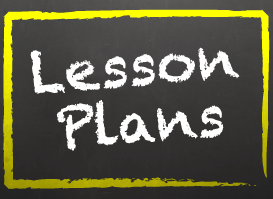Sixth graders are so sincere, a fact that surprised me as I have never really taught sixth grade before. So, imagine my delight when little hands waved high to volunteer to read parts for our table read of "Charlotte's Web". What? No offers of grade book credit (and a bag of Jolly Ranchers) needed to cajole participation? Huh and okay. Let's do this, kids.
Now, imagine my dismay to hear one young man literally sounding out words. Not just stumbling on multiple syllable words... all of the words. Red flag. Alarm bells in my head. He can't read. Can't read. In sixth grade and can't read.
I jump into high gear. Research his file to look for IEPs. Call his parents and refer them to our local literacy center for tutoring/help/support. Anything. Everything.
Because my drama class is only a nine week elective, this student rotated to other classes and the school year progressed. Hopefully, I provided the support his family needed. Perhaps the difference between sixth and seventh grade will change this reality and he will be able to read soon.
Not so. In walks this same student, this year a seventh grader. Guess what? He still can't read. I don't assign roles to him for table reads, of course. But, one day I heard him say to a classmate in small group LEGO set design project, "Oh, I can't do that part. I can't read."
This is the voice/phrase/echo that woke me up at four a.m. a week later in a panic. No way. I can't sit by. I will never be able to live with myself knowing that this student can't read. There is just something I am able to do. Something. Anything.
Our school doors open at 8:35 a.m. every day. Some parents drop their children off as early as eight a.m. to wait in the lobby until we launch the day. This student just happens to be dropped off every day. So, I decide that twenty minutes of reading with me every day has got to be better than just doing nothing. Better than leaving him to play video games on his cell phone. Armed with the tried-and-true "Love That Dog", we launch.
Every day. Five days a week. Twenty minutes a day. One hundred minutes a week, he and I stand in the school lobby, our backs against the library windows and we read. We finished "Love That Dog" and launched into "Diary of the Wimpy Kid" books. I loaned him my son's copy of the first book in the series and every day, we launch into the second book together in the lobby.
I would so love to report that after five months, this child is reading fluently. But, that is not true. I've spoke with his mother, his teachers, our administration. Everyone is "on board" to help this child learn to read.
But, when I ask him if HE read twenty minutes every night (alone or with a parent), he has every excuse in the world why he couldn't. We've progressed to the point where he's proud to carry his book with him every where he goes. But, it's still not enough.
I tell him, "Okay, kid. Listen. This is completely up to you. You must decide to read. This MUST be your priority. You are responsible for this."
And it's true. No matter how many accommodations are put into place at school and how worried his mother is or how much money is spent on tutors and literacy programs after school... ultimately, it is up to this child to decide.
Even if he has a learning disability (and he may)... he must decide to overcome barriers to read.
Meanwhile, I drag him out of the kid zone every morning for our mere twenty minutes a day.
At least, I can live with myself knowing that I did something. Perhaps it will eventually inspire HIM to do something.





